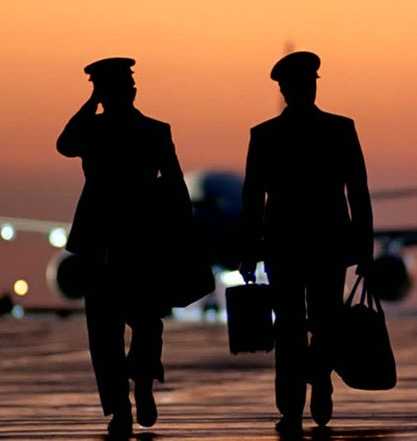Unlock your pilot career with airline pilot cadet programs. Whether you are aspiring pilot looking to kickstart your aviation career or a recent flight school graduate, modern airline pilot cadet programs can be a fit for your pilot career goals. In this guide, we will dig into the world of airline pilot cadet programs, providing you with valuabe insights and essential information to navigate your course towards a successful aviation journey. Let’s dive in and explore this rewarding journey and what becoming an airline pilot cadet can do for your career.
Table of Contents
What is an airline pilot cadet program?
Historical Airline Pilot Cadet programs take many forms, depending on the country of the sponsoring airline and the style of training and experience requirements found in that country. This article will consider cadet programs in the United States.
Modern airline cadet programs in the United States are tailored to meet the demands of the aviation industry while addressing the growing shortage of qualified pilots. These programs are primarily designed for individuals who aspire to become professional airline pilots and are structured to provide a streamlined pathway to achieve this goal.
United States cadet programs are sponsored by a specific employer, with the structure of the program established by that airline. The programs typically involve flight training at either an airline sponsored academy or an approved flight school. After completing training, the cadet works as a flight instructor at the airline sponsored academy or approved flight school as they gain enough experience to advance into a pilot job at that airline.
How Modern Airline Pilot Cadet Programs Work in the United States
Pilot Cadet programs in the United States aren’t structured like traditional programs found around the world. The traditional cadet program outside the United States takes ab initio applicants and hires them with zero experience. That employer then sponsors the initial training for the cadet. After the cadet gains required qualifications, they advance into a pilot position with the employer.
In the United States, pilots apply to a cadet program but still follow a loose structure of how pilots used to advance through professional careers.
While cadets are in initial training they are responsible for the costs of that training. They are responsible for making the transitions to the different rungs of the pilot career ladder. With most cadet programs, these transitions are well-defined and pilots don’t have to go through full job searches and interviews.
As part of their cadet programs, many airlines have set up all or some of the following:
- Financial aid in the form of loans for flight training. The cadet programs have attempted to get more favorable loan terms for the cadets.
- Lump sum payments paid to cadets to help them offset some costs of flight training
- Recurring stipends either during training or when working as a flight instructor to help with monthly living expenses or loan payments
Progression Through Airline Pilot Cadet Programs
Cadet programs are structured in one of two ways:
- An applicant applies to a cadet program with no pilot ratings or experience. The program uses a flight school that is either closely aligned with the airline or is owned by the airline.
- An applicant applies to a cadet program after already having started their training, or having started work in an entry level pilot job.
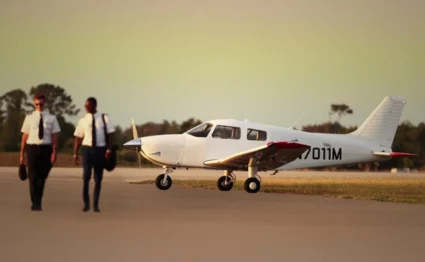
Progression when applying with no ratings and experience
- Apply to the target airline’s program.
- After acceptance enter into that airline’s pilot training academy.
- Complete all flight training.
- Work as a flight instructor at the academy until meeting flight experience requirements to obtain an airline transport pilot rating (ATP) or restricted ATP.
- Attend an ATP-CTP course, which is required before being able to take associated written and practical tests to earn an Airline Transport Pilot rating.
- Apply to work at, or advance into, a regional airline through a flow program if one exists. The regional airlines available for this step will be determined by the major airline or legacy airline and will likely be one that operates under a capacity purchase agreement (CPA) for that airline. If the cadet program is sponsored by a regional airline the pilot’s cadet path will end at this point.
- Apply to work at, or advance into, the major or legacy airline as part of a flow program or if the applicant had been originally accepted into the major/legacy airline’s cadet program.
Progression when already in training or working as a pilot.
The application process will vary depending on where the applicant is in their career progression. If applying while learning to fly, a potential cadet may be limited to available cadet or flow programs depending on what is available at their flight school. Entering a cadet program at any point but the beginning will look similar to the list above. The main differences will be what flight schools are available to attend and later teach at.
Cadet Programs Versus Pilot Pathway Programs
With a few exceptions, Airline Pilot Cadet Programs in the United States exist more as pilot pathway programs than as traditional cadet programs. Traditional cadet programs hire applicants with zero experience and then cover training expenses. The pilot pathway programs in the United States put the cost of training on the applicant.
Negatives of a pilot pathway program versus a cadet program include:
- The burden of flight training cost is carried by the pilot
- If there is a downturn in the industry, the pathway program may no longer provide defined advancement for the pilot. The pilot would be on their own to advance through their career.
- Pilots do not accrue seniority or longevity with their target employer.
Postives of a pilot pathway program versus a cadet program include:
- Some pathway programs in the United States require employment commitments. However, there is a lot more flexibility to pursue other pilot jobs outside the employer’s defined pathway.
- The flexibility allows pilots to choose the fastest career paths to advance to their ultimate goal. A pilot may actually advance slower to their dream job by staying solely within a single path defined by that employer.
- Pilots have more freedom to pursue other types of flying jobs if they find that airline flying is not for them.
Modern Cadet Programs Are in Response to Pilot Shortage
Modern airline pilot cadet programs have been created in response to the deepening pilot shortage facing the aviation industry. This shortage has been driven by a combination of factors, including increased demand for air travel, the aging pilot workforce, and more stringent regulatory requirements for pilot qualifications and rest periods.
These programs are designed to expedite the training and development of aspiring aviators, ensuring a steady supply of qualified pilots to meet the airline industry’s staffing needs. Through financial incentives, scholarships, and clear career progression paths, cadet programs aim to attract a diverse pool of candidates, including those who may not have previously considered a pilot career. Modern airline pilot cadet programs are a component of the industry’s multifaceted approach to mitigating the pilot shortage and maintaining pilot staffing levels.
Benefits of Airline Pilot Cadet Programs
Airline pilot cadet programs offer advantages for new pilots seeking a career as an airline pilot:
- Structured and immersive training
- Training aligns with specific airline standards and procedures
- Career mentorship
- Financial assistance, living stipends, or lump sum bonuses to help with training costs
- Defined path for direct employment
- Shortcut traditional entry-level pilot jobs
Once pilots are in an airline’s cadet program, that airline becomes invested in the applicant’s success. Employers structure their programs to support pilots and increase their chances of making it into that airline’s employment.
Structured and Immersive Pilot Training
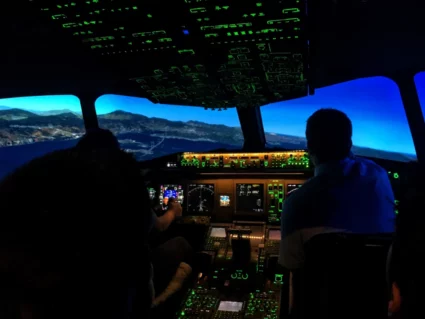
Sponsoring airlines work closely with their associated flight schools to tailor the training programs to most efficiently get a pilot ready for flying in an airline environment. These programs use standardized operating procedures, checklist procedures similar to airline flying, established profiles and callouts. Larger flight schools have dispatch systems that, while mostly not similar, still get pilots exposure to working within a dispatch environment.
Airline operations stress teamwork between flight crew, cabin crew, and available external resources. Crew resource management is an area of emphasis in training and checking in airline operations. Flight schools associated with cadet programs integrate crew resource management into every facet of their training. Students learn the practices and methods of crew resource management as a foundational part of their training.
Total Immersion Training
Cadet training programs are total immersion. With traditional flight training students attend training around other life activities such as work or school. The pace of training in total immersion programs is significantly faster and usually needs to be treated as a full-time job.
Total immersion training has several benefits:
- Allows total focus on training objectives
- Avoids having to review items and makes training more efficient and cost-effective
- Improved retention and proficiency
- Applicants finish training faster and can get started on their career sooner
- Similar pace to airline pilot training. Applicants will have exposure to the fast pace of airline pilot training and will have a greater chance of success when training with their employer.
Total immersion training has some drawbacks:
- It has to be a sole focus of the applicant’s life. They will not generally be able to work another job during this time.
- Total immersion training programs have a reputation of checking boxes and shuffling students along, regardless of their proficiency. This varies by program, but it behoves applicants to research programs to ensure they won’t fall through the cracks and will finish the training as competent pilots.
- The cost to complete flight training can be much higher. Total immersion programs have higher airplane rental rates, and higher flight instructor rates. Most other random costs associated with these programs end up being more too.
Pilot Career Mentorship
As part of being accepted into most pilot cadet programs, cadets are assigned a mentor. This mentor is an experienced airline pilot that is a valuable resource for advice, knowledge, and support as the cadet works through their career journey.
Mentors are difficult for aspiring pilots to find if they are not already well-connected in the aviation industry. Being assigned a mentor that has been vetted and trained in providing guidance is an under-appreciated part of the value of being accepted into a cadet program.
Financial Assistance, Living Stipends, or Lump Sum Bonuses to Help With Training Costs
The cost of pilot training is daunting. Particularly with the increased cost associated with total immersion programs. Cadets will have difficulty working a full-time job while attending training. To offset this, several cadet programs offer assistance in the form of:
- Negotiated lower interest rates for student loans associated with paying for flight training
- Some employers have worked with financial institutions to ensure access to student loans for all applicants accepted into their cadet program
- Lump sum bonuses paid at defined milestones. These are intended to subsidize the cost of training. When an employer advertises bonus amounts it is a total amount. Be aware that you will be receiving this spread out over time, and may have to wait to be an employee at that airline for before receiving the full amount that employer is advertising. Accepting bonuses establishes a work commitment with an employer.
- Recurring stipends during training and also potentially while flight instructing. For example, one major airline in the United States pays $500/month to cadets while in training. Accepting these stipends establishes a work commitment with an employer.
Defined Path for Direct Employment
Once accepted into an airline pilot cadet program students are set on a specific career path with a narrow list of available employers. This is restrictive but does offer advantages:
- Every part of the path is geared towards the procedures, policies, and operational culture of the airline. Once the cadet arrives at that employer they will have a comfortable base of knowledge of many aspects of working for that airline. This provides a stable foundation for professional growth and advancement within the organization.
- When starting work as a flight instructor and then working up through the different levels of the established pathway, each level is a near-guaranteed job, with less job-hunting and other interviewing stresses.
- Pilots may be able to shortcut having to work traditional entry level pilot jobs. They may have to ultimately work as a flight instructor, but there is also potential to spend less time doing so.
- There is potential in a pathway program to get to the end-goal employer sooner.
- Some cadet programs allow employees to begin accruing longevity while in the beginning stages of the program. Some programs provide seniority advantages in relation to classmates within a new hire class.
Challenges and Considerations
While the benefits of pursuing a career through an airline pilot cadet program are many, it is not without complexities and challenges. To navigate the path from aspiring pilot to an airline flight deck requires awareness of the challenges and considerations of such programs. These challenges range from rigorous applicant standards, to financial implications of costly training, and commitments associated with bonuses and stipends.
The pilot career has many types of work environments and opportunities. Airline pilot cadet program paths restrict pilots to a narrow part of what is available to pilots.
Competitive Nature of Cadet Program Applications
Within the current system of pilot training and development pilots can choose their flight school. The only thing needed to begin training is a Federal Aviation Administration (FAA) medical certificate and the financial means to pay for flight training.
With airline pilot cadet programs would-be pilots have to apply to a specific employer before they get started in their career. They haven’t had time yet to prove themselves in the career and will instead be judged by the employer on other criteria, much of which is unknowable to the applicant. Some of the criteria that an applicant is being judged with might be outside their control.
Airlines that have cadet programs have marketing campaigns promoting their programs. They are attempting to get access to a wider pool of would-be pilots. These marketing activities lead to the application process becoming more competitive.
Financial Implications and Costs Associated With Training
Applicants must be aware of the total costs associated with completing pilot training. A well-known national flight school that is partnered in several cadet programs advertises a completion price of $101,995 for flight training. This is the marketing price that is likely lower than what most students will pay. Airlines have made financing more accessible, but students need to be aware that the total cost of the program is taking on a substantial personal obligation. If living expenses are needed this further increases that debt. If a cadet washes out of training they are responsible for the debt accrued to that point.
Potential Limitations or Restrictions in Program Offerings
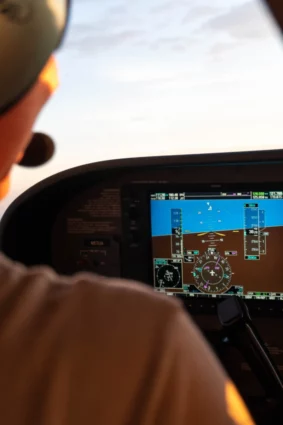
When entering into a cadet program pilots are funneled into a very specific and narrow path. As the training is completely geared for this path, they may not be well-equipped to work in other available areas of the pilot career should they decide airlines are not for them.
For example, cadets will often be taught in airplanes with advanced glass flight decks. While this prepares cadets well for modern airliners, it does not prepare them to fly older airplanes with round dial gauges such as what is frequently found in charter operations, in smaller cargo operators, or in fire fighting or EMT airplanes.
Restrictive Career Path
Once a pilot applicant has begun a cadet program it can be difficult to get out of the established path. There are several reasons a cadet may want to exit a cadet program. They may find that they don’t like to work in airline operations, or they may find that they don’t enjoy working in the culture at a specific employer.
Due to commitments associated with cadet programs, it can be difficult to change the course of a pilot career once it has begun. Pilots following the traditional path still have options to follow opportunities that may better suit their goals.
Some flow programs are moving at a slower advancement pace than what pilots pursuing traditional advancement can achieve. Specifically, it can take longer to get to a legacy airline following their established flow program than it otherwise would be advancing outside their flow program.
Airline Pilot Cadet Program Pros and Cons
Tips for Success in Airline Pilot Cadet Programs
If you’ve decided to pursue an airline pilot cadet path there are many things that need to be completed both before and during the program to maximize success.
Research and Choose the Right Program
Aspiring pilots need to begin research by identifying personal objectives, including career aspirations and location preferences. Pilots need to understand whether they want to target getting hired by a specific employer, achieve rapid career progression, or gain exposure to diverse aviation operations.
Potential candidates have to compare different programs. There are lists of available programs lower in this article. When comparing different programs, pay particular attention to how each program aligns with your life and career goals.
The following list is not exhaustive, but includes many of the items candidates should consider when evaluating programs:
- Curriculum structure and training duration.
- Asses the programs’ reputation within the industry, including its track record for producing successful airline pilots. Reaching out to program alumni or current cadets can be particular valuable for this step.
- Asses financial considerations to include program cost, available financing options, available bonuses and stipends. Analyze this regarding potential return on investment. Some programs may end up costing more, but there might also be an opportunity to earn significantly more money in those programs.
- Pilots need to evaluate each step off the path of flow programs. This includes the flight instructing phase and intermediate phases such as a regional airline. Some pathways have multiple options to choose from at different stages. Evaluate potential employers based on how they fit within your personal goals and also whether it can be a good place to work for a while. In most pathways, the intent of the employer is that a cadet advances based on a set timeframe. But be aware that a delay is possible at each step, depending on external factors such as the economy or staffing needs at each employer.
Prepare for the Selection Process

Airline Pilot Cadet programs entrance requirements vary significantly. The following list gives a general idea of starting points for preparing for the selection processes:
- Research and understand the requirements: ensure you meet the age, and education requirements, and can obtain the necessary FAA pilot medical certificate.
- Understand the necessary pilot qualifications to include required pilot license and flight hours. If flight experience is required seek to gain experience in advanced aircraft types and in different weather.
- Enhance your knowledge and skill. Continuously expand your knowledge through self study, online courses, and by attending aviation seminars.
- Review the selection criteria and understand the assessment methods used by the cadet program.
- Practice aptitude tests, psychometric assessments, and interviews commonly used in the pilot cadet selection process.
- Seek guidance from experienced pilots and career counselors to improve your interview and assessment performance.
- Prepare an appropriately structured resume to highlight your experience, qualifications, education, and achievements.
Build a Strong Professional Network
As with most industries, in aviation, connections and relationships play an important role in opening doors to opportunities. Where two equally qualified candidates are competing for a position, the one that is better known among admitting personal will get the nod.
A robust professional network provides insights, mentorship, and references, which are often factors in the selection processes for competitive training programs and also for employment. Building a network in the early stages of a pilot career can help candidates learn about the industry, making them more appealing for cadet programs.
As pilots progress through an airline cadet program and into their professional careers, a strong professional network remains just as essential. The aviation employment market is dynamic and ever evolving and has pronounced periods of ups and downs. Having a widespread professional network helps pilots gain insight into new opportunities just as they arise. Having a strong network helps pilots find jobs when the industry is in a downturn.
Complete FAA Medical Exam Before Beginning
The single most important thing for an aspiring pilot to accomplish before beginning any flight training, or committing to any obligations as part of a cadet program, is to ensure they can obtain a Federal Aviation Administration (FAA) first class medical certificate. This is required for a pilot to work at an airline.
The standards the FAA sets for obtaining this certificate are achievable for most, but there are some gotchas that catch would-be pilots unaware. There are some medical conditions that the FAA will allow, but a special issuance may be required, which takes additional time.
It would be a waste of time and resources if an aspiring pilot begins training only to find out they will not medically qualify to work as a professional pilot.
Regional Airline Cadet Programs
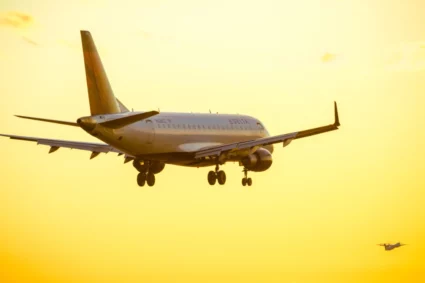
Regional airlines operate under what is called a capacity purchase agreement (CPA). Other airline partners pay a fixed rate for a regional airplane to fly, and that other partner then sells the seats as if it is their own flight. The regional airline industry is confusing as at least one of the regional carriers has a larger airplane fleet than other airlines that are classified as major airlines.
Several regional airlines that have pilot cadet programs operate their own programs to feed their airline. Many regional airlines partner in the cadet and pathway programs of their legacy airline partners. That is, those regional airlines are a stepping stone within a pathway program. Some regional airlines operate both their own internal cadet programs while also being a stepping stone for a legacy airline simultaneously.
Endeavor Air
- Wholly owned subsidiary of Delta Air Lines
- Endeavor has its own in-house program called STEP, which is available to flight students and flight instructors at one of Endeavor’s focus schools.
- STEP program does not require a commitment. It is intended more as a mentoring program.
- Endeavor is a participating partner in the Delta Air Lines’ Propel Pilot Career Path Program
- Flow through agreement with Delta Air Lines where Endeavor Air pilots do not need to interview to advance to Delta.
- More Information about Endeavor Air
Envoy Air
- Wholly owned subsidiary of American Airlines Group
- Envoy has its own in-house pilot cadet program
- Once employed as a flight instructor within Envoy’s pathway program, cadets receive benefits of employment with Envoy.
- Upon reaching ATP/R-ATP flight hour requirements, cadets will have ATP-CTP course paid for by Envoy, including hotel accommodations and ground transportation.
- Cadets completing ATP-CTP course and written exam will be placed into the next available Envoy class once reaching minimum flight experience. No additional interview is required.
- Envoy is a participating partner in the American Airlines Pilot Cadet Academy
- Flow through agreement with American Airlines where Envoy pilots do not need to interview to advance to American
- More information about Envoy Air
Gojet Airlines
- GoJet Pilot Cadet program is called Wingman
- Wingman provides pilots enrolled in a professional pilot training program early previews into regional airline pilot jobs
- Entry into the program includes a two-day visit to GoJet Company headquarters. After this visit, Wingman participants may travel space available on United Airlines.
- Wingman participants are mentored by the pilot recruitment team and are given priority in the First Officer recruitment process
- GoJet is a participating partner in the United Airlines Aviate Academy and the Aviate career path.
- More information about GoJet Airlines
Horizon Air
- Wholly owned subsidiary of Alaska Air Group
- Pilots apply to the program while attending flight school or while flight instructing
- Participating pilots receive two stipends while progressing through flight training. While flight instructing, participants periodically update Horizon Air on their progress towards reaching ATP/R-ATP required flight experience.
- After completing the program and meeting all qualifications, the participant is then assigned a new hire pilot class date at Horizon Air
- Horizon Air works with Alaska Airlines on their pilot pathway program. Horizon candidates wishing to participate interview for both Horizon Air and Alaska Airlines on the same day.
- More information about Horizon Air
Mesa Airlines
- Applicants apply to the program when they have a commercial pilot certificate with instrument rating, or when they have a private pilot license if they are in the United Airline’s Aviate program.
- Mesa Airlines Cadet program participants have flight benefits and accrue longevity before reaching employment with Mesa Airlines.
- Mesa Airlines Cadet program participants have access to mentors
- Mesa Airlines is a participating partner in the United Airlines Aviate Academy and Aviate career path.
- More information about Mesa Airlines
Piedmont Airlines
- Wholly owned subsidiary of American Airlines Group
- Cadets receive guidance and financial assistance while in the program
- Piedmont Cadets may build flight experience any way they wish and are not locked into instructing for partner flight schools
- Piedmont will pay for ATP-CTP course and test, along with hotel accommodations and ground transportation during the course. Once ATP-CTP course and exam are completed the Cadet is placed into the next available new hire pilot class at Piedmont.
- Direct flow to American Airlines available, with no additional interview required to advance to American
- Piedmont Airlines is a participant in the American Airlines Cadet Academy
- More information about Piedmont Airlines
PSA Airlines
- Wholly owned subsidiary of American Airlines Group
- PSA Airlines Cadet Program is open to all colleges, universities, and flight schools
- Cadets receive mentorship from airline industry experts
- Financial incentive package includes tuition assistance and bonuses after starting as a first officer at PSA airlines
- Direct flow to American Airlines available, with no additional interview required to advance to American
- PSA Airlines participates in the American Airlines Cadet Academy
- More information about PSA Airlines
Republic Airways
- Republic Airways has its own dedicated flight school called LIFT Academy
- Cadet program benefits include priority class date selection, being assigned a pilot mentor that is a current Republic Airways pilot, and an opportunity to attend an event at Republic Airways corporate headquarters
- More information about Republic Airways
Skywest Airlines
- Seniority accrual towards benefits eligibility begins as soon as an applicant is accepted into the cadet program
- Skywest programs include mentorship for Cadet participants
- Skywest Airlines participates in Delta Air Lines Propel Pilot Career Path Program
- More information about Skywest Airlines
Air Wisconsin Airlines
- Program includes mentorship from experienced pilots
- Cadet participants have access to company events and volunteer opportunities
- More information about Air Wisconsin Airlines
Major Airline / Low-Cost Carrier Cadet Programs
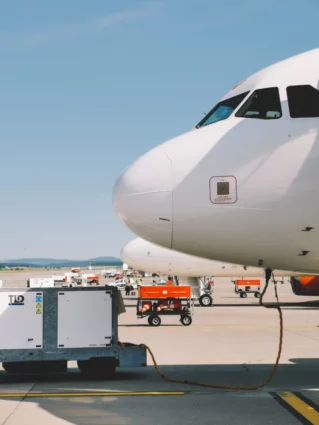
Major airlines operate flights under their own brand. They are classified as major airlines when yearly revenue exceeds $1 billion. Most major airlines in the United States operate their own flow program. They generally don’t partner with regional airlines as part of an intermediate step en route to employment at that airline.
Major Airlines flow programs represent significant opportunity. Where pilots had to previously fly in the military or work for a regional airline before employment with a major airline, several major airlines now have flow programs that hire applicants directly from flight instructing. Pilots have the option of working for a regional airline or a major airline after working their first pilot job. Pilots can get hired by a legacy carrier faster if they go from flight instructing to a major airline and then apply to a legacy carrier, versus working for a regional airline within that legacy airline’s established pilot pathway program.
Spirit Airlines
- Spirit Airlines has partnered with many flight schools as part of their pathway program.
- While attending a participating flight school, once an applicant has reached 500 hours, they may apply to the pathway program. If selected, that pilot will be given a conditional job offer while they continue to teach as a flight instructor.
- When reaching applicable ATP minimums, participating pilots complete an approved ATP-CTP course and written exam. After passing the ATP-CTP phase and reaching Spirit Airlines pilot hiring minimums, applicants are placed into the next available new hire class at Spirit Airlines.
- More information about Spirit Airlines
Southwest Airlines
- Southwest Airlines pilot cadet program is called Destination 225 Cadet Pathway
- Southwest partners with three flight schools for a 13-month-long, 40 hours per week flight training program
- Each cadet receives personal mentorship from a First Officer at Southwest Airlines
- The program includes preferential interviews at Southwest Airlines partner’s that have been established for pilots to gain experience at an intermediate pilot job.
- The program has a two-year commitment (actual commitment varies depending on partners)
- Cadets complete the program in approximately four years and are then deemed ready to begin training as a Southwest Airlines first officer
- More information about Southwest Airlines
Frontier Airlines
- Frontier Airlines has partnered with ATP Flight School for their pilot cadet program
- Program participants receive a monthly stipend of $500 until reaching 750 hours of flight time. The stipend increases to $1,000 per month for the remainder of the 24-month program after passing 750 hours.
- Additional sign-on bonuses available upon completing the program
- Frontier pays for ATP-CTP and Jet Transition Course
- Travel benefits available with Frontier Airlines while completing the program
- Successful graduates of the ATP Flight School program who meet minimum hiring qualifications are guaranteed placement in the next available Frontier First Officer training class upon graduating
- More information about Frontier Airlines
jetBlue
- JetBlue Airway’s pilot cadet program is called JetBlue Gateways
- jetBlue Gateways has several pathways available. They are called Gateway University, Gateway Select, Gateway Flex, Gateway Direct, and Gateway Family. You can find more information on each program here.
- More information about JetBlue Airways
Sun Country Airlines
- Sun Country Airlines has partnered with several national flight schools
- Candidates apply to the program while they are working as a flight instructor. When candidates are accepted they receive a contingent job offer with Sun Country.
- ATP-CTP course is paid for by Sun Country
- Cadets receive first year pay while in the program and also get Sun Country Airlines’ Employee Benefits
- More information about Sun Country Airlines
Breeze Airways
- Breeze Airways pilot cadet program is called Breeze Airways Embark
- Breeze Airways has partnered with ATP flight school for the program
- At 500 hours of total flight time ATP flight school recommends flight instructors that had previously attended the Breeze sponsored flight training program to interview with Breeze
- At 1,000 to 1,500 hours of flight time participating candidates complete a jet transition course followed by an ATP-CTP course at ATP flight school
- Cadet participants then transition straight into flying for Breeze Airways
- More information about Breeze Airways
Allegiant Airlines
- Allegiant Airlines pilot cadet program is called altitude Pilot Pathway
- altitude Pilot Pathway candidates train at one of Allegiant Airlines’ partner schools
- As part of pilot training cadets complete additional leadership training
- When leadership training is complete applicants apply for a pilot position at Allegiant Airlines. Accepted candidates receive a conditional job offer.
- More information about Allegiant Airlines
Legacy Airline Cadet Programs
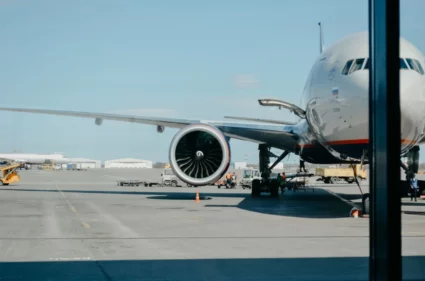
Legacy Airlines differ from Major Airlines in that they flew interstate routes before the Airline Deregulation Act of 1978. The three biggest legacy airlines, Delta Air Lines, United Airlines, and American Airlines have all created or partnered with dedicated cadet training academies. Additionally, all three carriers extensively use their regional airline partners to advance pilots along defined pathway programs.
The smallest two legacy airlines also have established cadet and pathway programs, though Hawaiian Airlines is more of an internal advancement system than a pathway or cadet program. Alaska Airlines has created a system similar to the big three.
Delta Air Lines
- Delta Air Lines has a pilot pathway program called Propel Pilot Career Path Program
- More information about Delta Air Lines
United Airlines
- United Airlines has a pilot pathway program called Aviate
- More information about United Airlines
American Airlines
- American Airlines has a pilot pathway program called American Airlines Cadet Academy
- More information about American Airlines
Hawaiian Airlines
- Hawaiian Airlines pilot pathway program is called Hawaiian’s Pilot Pathway Aircrew Instructor program
- Candidates hired through this program work as instructors providing ground training to Hawaiian Airlines’ pilots while also developing courses for Flight Standards & Qualifications at the airline.
- After one year of work instructors are guaranteed a first officer interview during the next available hiring period.
- More information about Hawaiian Airlines
Alaska Airlines
- Alaska Airlines has a cadet program using the Ascend Pilot Academy
- Ascent Pilot Academy is a partnership with Hillsboro Aero Academy. Enrolled candidates receive a stipend up to $26,462 when signing on to work for Horizon Air.
- Alaska Airlines has a pathway program in partnership with their regional airline Horizon Air
- Candidates that apply to the pathway program interview with both Horizon and Alaska on the same day
- Pilots accepted into the pathway program are placed on the Alaska Airlines “Pathways List” in order of their Horizon Air seniority number. Class dates are assigned in order of seniority from the list.
- More information about Alaska Airlines
Cargo Carrier Cadet Programs
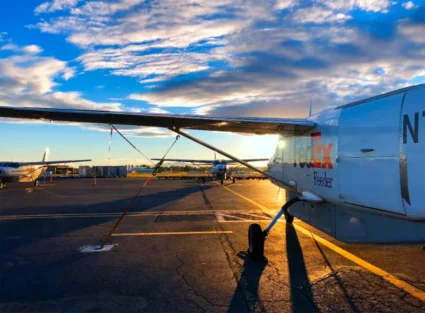
Of the large cargo carriers, FedEx and United Parcel Service both have established pathway programs using partner feeder carriers. The other three cargo airlines listed below have developed preferential hiring programs.
FedEx
- FedEx Pilot Pathway program is called purple runway
- Purple runway path includes flying for one of FedEx’s regional partners, Empire Airlines, Mountain Air Cargo, or IFL Group
- Entrance into Purple Runway entails an upfront FedEx mainline interview before beginning work at a feeder
- Guaranteed flow to FedEx when program conditions are met
- Purple pathway requirements for advancement include checkride failures while at a feeder partner, minimum service of 500 hours as pilot-in-command of multi-engine airplanes, completing a jet transition course, and regular networking and interaction with FedEx
- More information about FedEx
United Parcel Service
- The UPS Pilot Cadet Program is called Flightpath and has one of two options : FlightPath 1 and FlightPath 2
- FlightPath 1 is for candidates not already working at UPS’s partner carrier Ameriflight
- FlightPath 2 is for candidates already working at Ameriflight
- Candidates are paired with a UPS pilot as a mentor while in the program
- Both paths require a minimum amount of flight experience gained working at Ameriflight. UPS prefers that at least some flight time is in the EMB 120.
- More information about United Parcel Service
Atlas Air
- Atlas Air pilot pathway program is a bridge program from Ameriflight
- Pilots working at Ameriflight express interest in the bridge program to a supervisor
- Recommended candidates must complete a minimum of 36 months of working as a pilot for Ameriflight and must complete Atlas’ ATP-CTP program
- Participants complete a review for employment by Atlas Air
- More information about Atlas Air
ABX Air
- ABX Air pilot pathway program is called ACC Pathway Program
- ABX Air is partnered with Air Cargo Carriers
- After completing two years of flying as a captain for Air Cargo Carriers, applicants are eligible to be hired by ABX Air as a first officer
- More information about ABX Air
Air Transport International
- Air Transport International has partnered with Silver Airways for a transition program
- After at least 18 months of flying for Silver Airways, or 1,000 flight hours with them, candidates are allowed to transition to a position with ATI
- More information about Air Transport International
Pilots Need to Stay Informed on the Ever Changing Employment Market and Associated Hiring Programs
Airline pilot cadet programs offer a structured and comprehensive training pathway that equips pilots with the essential aeronautical knowledge and flight skills and instills the standards and procedures of the sponsoring airline. These programs provide a direct entry point for candidates into the competitive world of commercial aviation. By offering financial support, mentorship, and a clear progression route, airline pilot cadet programs significantly reduce the barriers to entry for aspiring pilots.
Aspiring pilots entering training and current pilots already in the workforce need to keep aware of changes in cadet and pathway programs. As these programs evolve, they will shift the nature of how each airline hires and staffs operations. Pilots not staying abreast of these changes will lose their competitive advantage and may end up becoming ineligible for positions if an airline decides to focus completely inward to hiring only from their defined pathway program.
Greg started his professional pilot journey in 2002 after graduating from Embry Riddle. Since that time he has accumulated over 8,000 hours working as a pilot. Greg’s professional experience includes flight instructing, animal tracking, backcountry flying, forest firefighting, passenger charter, part 135 cargo, flying for a regional airline, a national low cost airline, a legacy airline, and also working as a manager in charge of Part 135 and Part 121 training programs.

